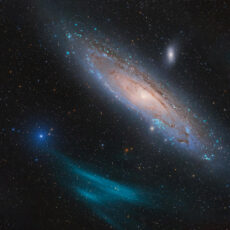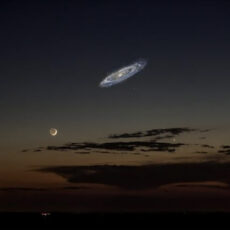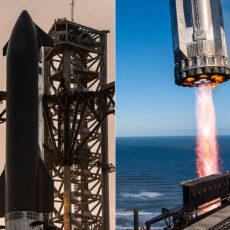![]()
NASA / ESA’s Hubble Space Telescope took over 10-years to shoot the images required to compile this massive 2.5 billion pixel mosaic of the Andromeda Galaxy, located 2.5 million light-years from Earth. More specifically, it consists of 600 overlapping Hubble snapshots that were stitched together.
This spiral galaxy is so near to Earth that in angular size, it’s six times the apparent diameter of the full Moon, and can be seen without a telescope. The full mosaic required two Hubble programs and over 1,000 Hubble orbits that spanned more than a decade.
- Superior Optics: 400mm(f/5.7) focal length and 70mm aperture, fully coated optics glass lens with high transmission coatings creates stunning images...
- Magnification: Come with two replaceable eyepieces and one 3x Barlow lens.3x Barlow lens trebles the magnifying power of each eyepiece. 5x24 finder...
- Wireless Remote: This refractor telescope includes one smart phone adapter and one Wireless camera remote to explore the nature of the world easily...
Andromeda’s a train wreck. It looks like it has been through some kind of event that caused it to form a lot of stars and then just shut down. This was probably due to a collision with another galaxy in the neighborhood. We can tell it’s got this big central bulge of older stars and a star-forming disk that’s not as active as you might expect given the galaxy’s mass,” said Daniel Weisz at the University of California, Berkeley.









